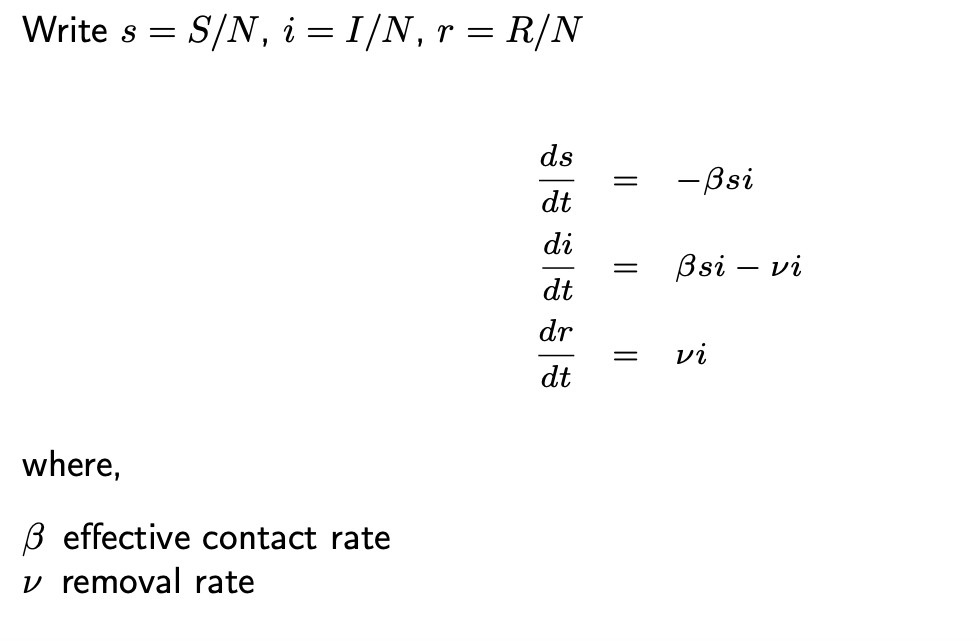I was having trouble trying to understand the parameters of the simplest SIR model.
If beta is the effective contact rate and s is the percentage of people who are susceptible, then how do the units cancel out such that ds/dt is measured in percentage per unit time? When I multiply -ßsi out, the units cancel out to people/time, which isn't how ds/dt is measured. Am I missing something here?

